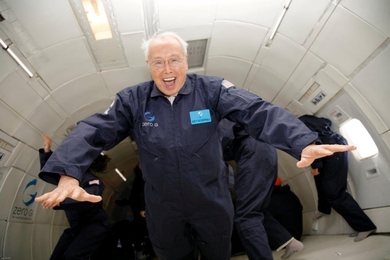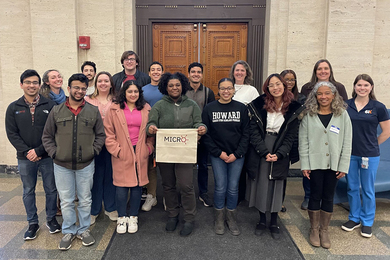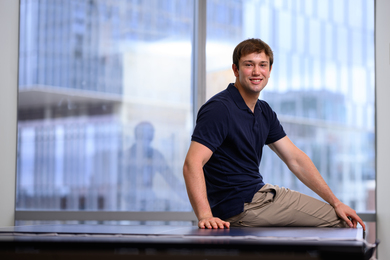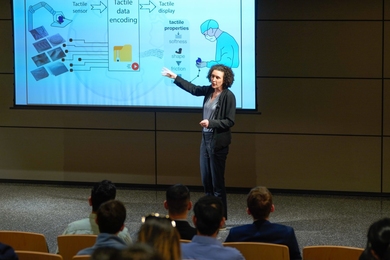The 77-year-old John Glenn's return to space this Thursday "will be a huge shot to the elderly the likes of which we haven't seen since Yul Brynner was on the stage" and could also produce data that will help scientists better understand the aging process, said Laurence R. Young, the Apollo Program Professor of Astronautics.
Professor Young and Professor Richard J. Cohen of the Harvard-MIT Division of Health Sciences and Technology are among six experts from around the country who are NASA spokesmen for why Senator Glenn should be on the mission.
Senator Glenn will be involved in several studies, many of which are related to aging. Aging is associated with a variety of symptoms such as muscle atrophy; astronauts have reported similar symptoms. Exploring the "deconditioning" that seems to occur in space could lead to potential therapies for both astronauts and the elderly, according to Professor Young.
Professor Young's own research involves the human balance system and how it adapts to space. In a statement distributed by NASA he said:
"Just as older people may stumble or fall, especially in the dark, astronauts often have trouble with Earth's gravity after a space flight. In both cases, the balance organs in the inner ear are affected and the brain must adapt to a new challenge of walking and standing. Measurements of the stability of stance and gaze following the space flight of Senator Glenn and his younger crew mates will help us understand the relationships between space and aging as they influence posture."
He further cited other, non-scientific reasons for Senator Glenn's participation in the flight. In addition to being a boon for the elderly, "quite frankly I think he deserves it," Professor Young said.
Among the studies Senator Glenn will be involved in are three cardiovascular investigations. Professor Cohen said in another NASA statement: "John Glenn's flight will provide a unique opportunity to study the effect of space flight on cardiovascular function in an older individual. NASA's research program has already made important contributions to cardiovascular medicine, in particular in regard to problems encountered by older patients. John Glenn's flight highlights the combined benefits to the space program and to public health which come out of space medicine research."
"For example," he told MIT Tech Talk, "past NASA-sponsored research in my laboratory helped lead to the development of a new noninvasive technique for identifying individuals at risk for sudden cardiac death which potentially may help save tens of thousands of lives per year in the United States."
A version of this article appeared in MIT Tech Talk on October 28, 1998.





